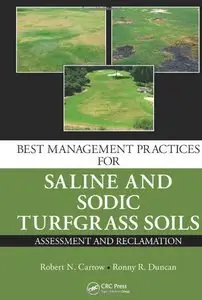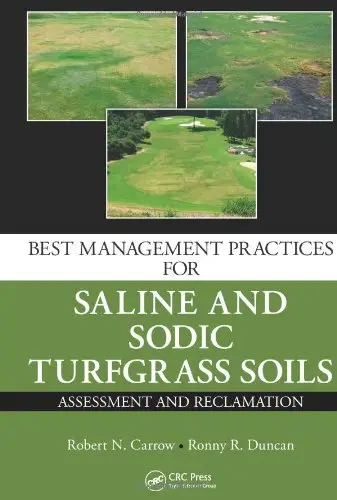Robert N. Carrow, "Best Management Practices for Saline and Sodic Turfgrass Soils: Assessment and Reclamation"
English | ISBN: 1439814740 | 2011 | 480 pages | PDF | 17,5 MB
English | ISBN: 1439814740 | 2011 | 480 pages | PDF | 17,5 MB
The complex issues involved in the management of saline and sodic turfgrass soils are enough to perplex even the most experienced site manager — there is no "silver bullet" amendment, treatment, or grass for salinity management. Best Management Practices for Saline and Sodic Turfgrass Soils: Assessment and Reclamation presents comprehensive scientific principles and detailed, practical management and assessment recommendations for turfgrass and landscape sites.
The authors use the Best Management Practices (BMPs) concept, considered the gold-standard management approach for any individual environmental issue, since it is a whole ecosystem (holistic), science-based salinity management approach that allows all possible management options to be considered and implemented on a site-specific basis. They identify BMP strategies, including irrigation system design; irrigation scheduling and salinity leaching; chemical, physical, and biological amendments; cultivation; topdressing; soil modification; sand-capping; surface and subsurface drainage options; nutritional practices; additional cultural practices; and ongoing monitoring. The book presents emerging challenges, technology, and concepts that address integration of salinity management into comprehensive site environmental or sustainable management systems, use of halophytic turfgrasses for non-traditional purposes, integration of geospatial and geostatistical concepts and technology, and integration of new sensor technology into daily management paradigms.
Outlining a holistic BMP approach, the book incorporates scientific principles and practical management recommendations and details specific salinity challenges and the logic behind each BMP strategy for salinity management, with an emphasis on actual field problems. The book is formatted for flexible use, with stand-alone chapters that include outlines for quick review of a topic for those requiring only a basic understanding as well as in-depth discussions of the science and practical aspects for those seeking a more rigorous treatment. It supplies a single source for all the information required to identify and manage diverse types of salinity stresses.



